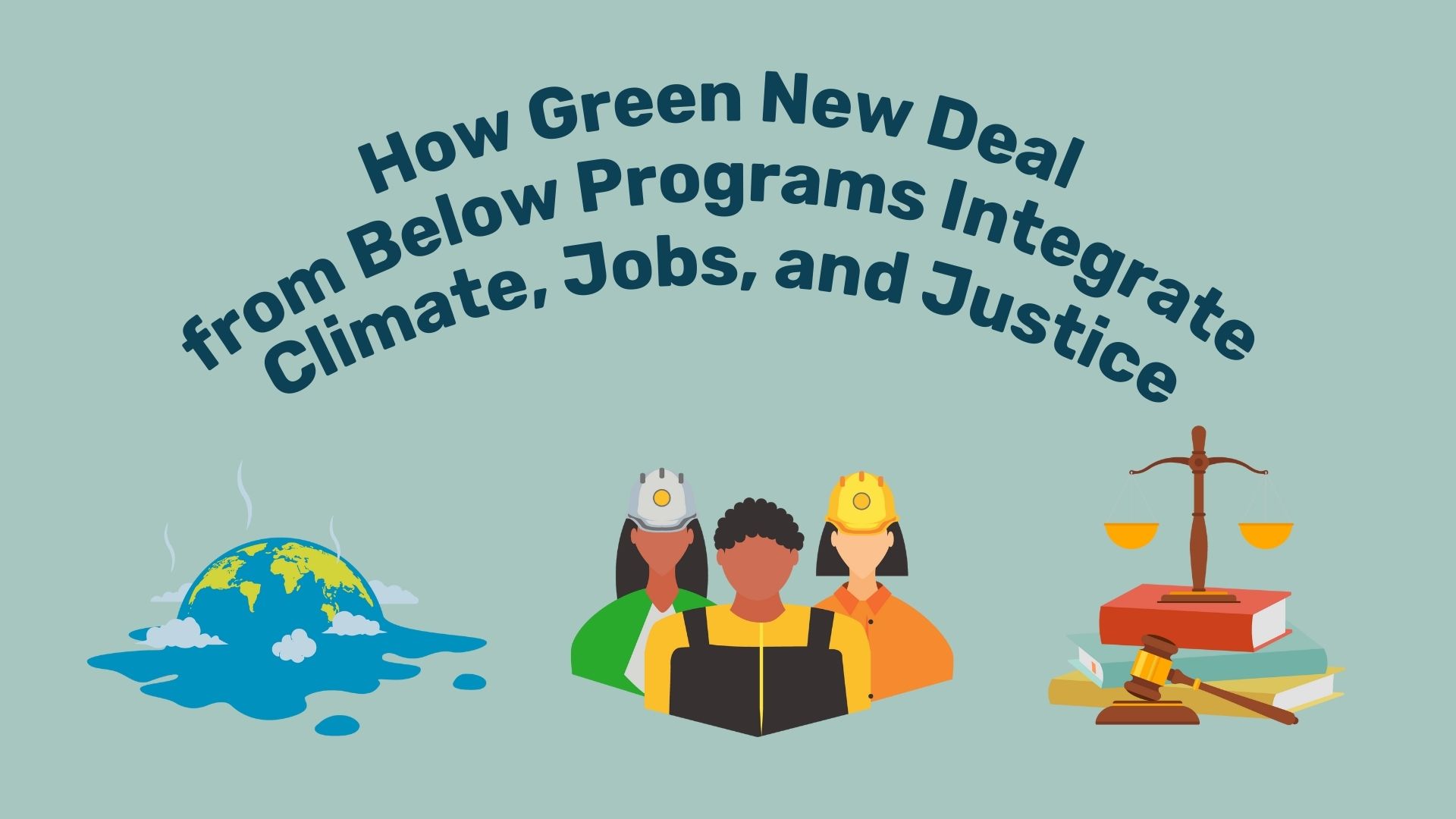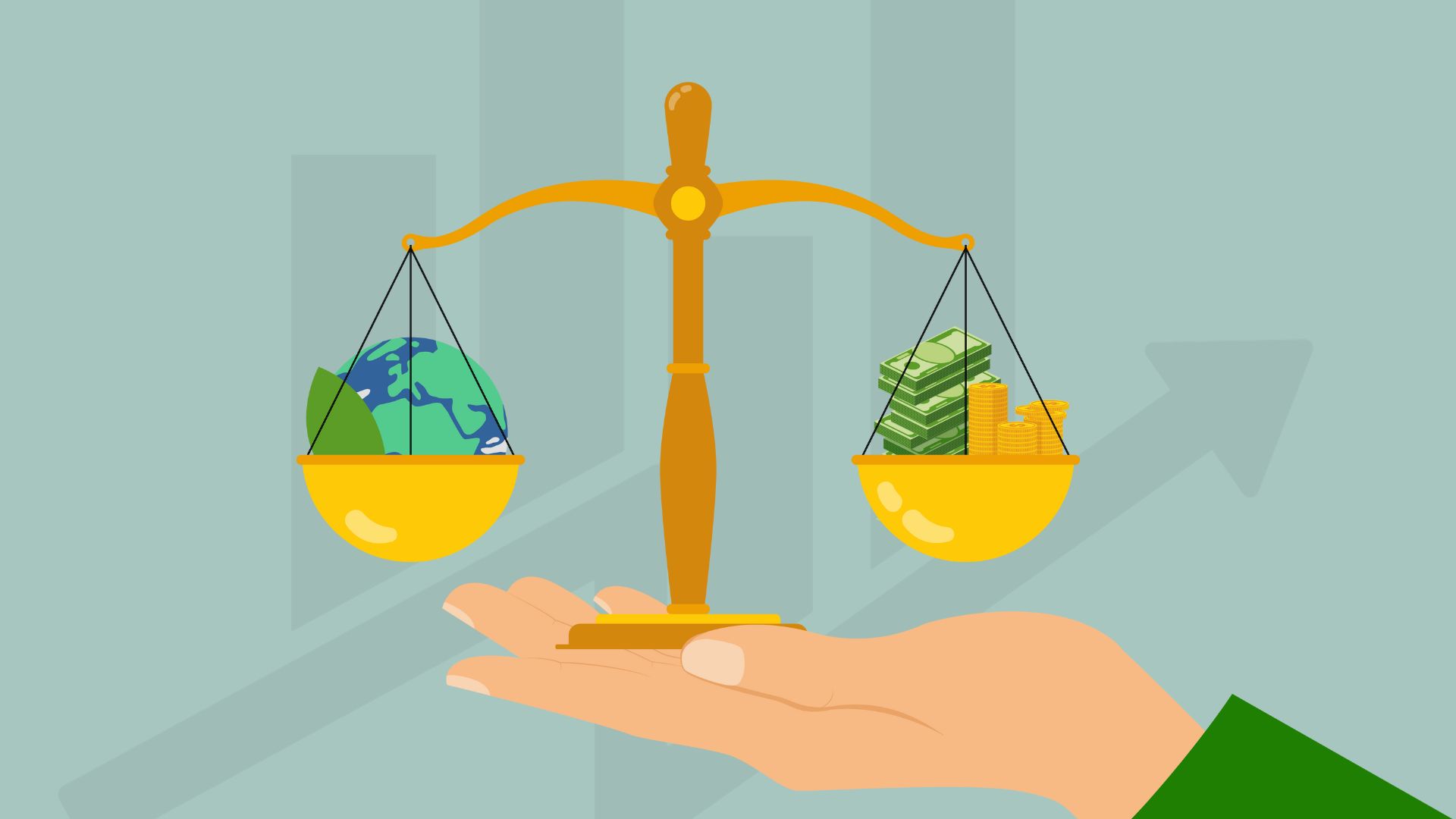Listen to the audio version >>
The appeal of the Green New Deal lies in its drawing together the varied needs of diverse constituencies into a common program that realizes them all. Here’s how that works at the sub-national level.

The Green New Deal from Below is not a random collection of isolated initiatives; it is a set of synergistic policies determined by a common purpose and exhibiting a common set of characteristics. It relies not on the market, but on action by public institutions and by the people themselves. It establishes Green New Deal policies and programs at community, local, state, and regional levels both for their own sake and as building blocks for a national and even a global Green New Deal. Rather than leaving outcomes to chance or the vagaries of the market, it embraces municipal, metropolitan, state, and regional planning. It mobilizes resources to provide for public needs in ways that also help reverse the rampant inequality of American society. And it pursues climate solutions that eliminate fossil fuel energy rather than using technological or economic fixes to perpetuate it.
All aspects of this Green New Deal from Below are driven by the existential necessity to protect the climate. This requires increasing climate-safe energy production; reducing the need for energy through energy efficiency and conservation; and managed reduction of fossil fuel burning. Climate protection is generally the pivot around which all the other necessary social transformations turn.
New, climate-safe energy from renewable sources is being created by Green New Deals from Below. For example, the third annual progress report of the Los Angeles Green New Deal found that the city is meeting 43% of its energy needs with renewables like wind and solar and will generate 97% of its energy with renewables by 2030.
Energy consumption is being reduced. For example, the Los Angeles Green New Deal plan cuts energy use in all types of buildings by 22% by 2025, 34% by 2035, and 44% by 2050.
Fossil fuel burning is being reduced and eliminated. Fossil fuel plants, pipelines, and mines are being ratchetted or shut down, such as the closing of 353 of the 530 coal-fired power plants that were active in 2010 and the blocking of the Keystone XL pipeline after a 13-year struggle. California, America’s largest auto market, is phasing out the sale of gasoline-powered cars over the next 13 years.
Carbon is being withdrawn from the atmosphere through urban forestry programs in Boston, Philadelphia, and many other cities. Farming, forestry, and “Blue New Deal” ocean farming are contributing to atmospheric restoration.
The Green New Deals from Below are changing energy systems in ways that also rectify past injustices and open new opportunities. That ranges from planting trees in urban hotspots to shutting down polluting power plants in environmental justice communities to electrifying gas-guzzling vehicles or replacing them with public transit in highly polluted areas.
The original Green New Deal program included an expansive social welfare agenda, including education, housing, healthcare, and other social needs. That agenda is being implemented as part of the Green New Deal from Below. In California, for example, the same spurt of legislation that established accelerated climate protection also instituted free nutritious meals for all of the state’s six million public school students and removed restrictions that had significantly impeded the building of affordable housing.
Workers and communities are being protected against negative side effects of the transition to a just and climate-safe economy. In cities like Somerset, MA fossil fuel power plants have been shut down and replaced by non-polluting, job-creating renewable energy production. In Colorado and Illinois, legislation is providing jobs programs and new investment for communities that have been hit by the shutdown of coal mines. In cities like Philadelphia and states like California, new green jobs are being created and marginalized workers and communities are being trained to fill them.
A hallmark of these Green New Deal from Below programs is the way they integrate the varied needs of various constituencies. Consider, for example, Washington State’s 2022 “Move Ahead Washington” transportation program. It invests $1.45 billion for public transit. This is part of a multimodal transportation program that also includes bike and pedestrian projects to reduce accidents. The program not only reduces greenhouse gases and gives relief to highly polluted communities, but it provides new mobility options for disabled people and other non-drivers. And, in order to encourage a new culture of transportation use, the legislation provides free access to the state’s transit, trains, and ferries for riders under 18 and bicycle education for students – with a free bike for those who participate in the program. Or consider the Denver CARE Project (Clean Affordable Renewable Energy) which has built a community solar garden that provides reduced energy costs to low-income communities and provides training and jobs in the solar industry for under-served communities – all while reducing the emission of greenhouse gases.
Beyond Neoliberalism

The Green New Deal represents a historic shift away from the dominant market-oriented ideology of the past four decades, often referred to as “neoliberalism.” It asserts the legitimacy and indeed the necessity of action by institutions representing the public and of collective action by the people themselves.
Neoliberalism has also marked much of the policy of the climate movement itself, which has often advocated so-called market mechanisms like cap-and-trade systems and carbon offsets in effect to bribe the rich and powerful to become climate good guys. The Green New Deal from Below pursues an entirely different climate protection strategy, based on mandatory emissions reductions, managed decline in fossil fuel extraction and burning, public investment, and climate-safe energy alternatives that create jobs and a more just economy.
Of course, the risk remains that the Green New Deal itself can be captured or coopted and made to serve the ends of exploitation and greenwashing. But its basic orientation toward public initiative, investment, and planning in the public interest provides an antidote to the blandishments of green “false flag” operations.
Much of the climate movement itself has presented climate destruction as largely a matter of deleterious individual consumption choices. The fix for climate change, accordingly, has often been posed as a need for individuals to turn off lightbulbs, eat less meat, drive electric cars, and otherwise change their consumption habits. This approach has often had a moralistic, self-blaming dynamic while leaving unchallenged the role of production and other broad social structures in climate destruction. The Green New Deal, while recognizing the role of consumption patterns, especially for energy consumption, has put production and other social dimensions front and center.
Green New Deal initiatives come in the context of an emerging struggle between the neoliberal policies that have dominated the US for 40 years and the reemergence of activist government “industrial policy,” embodied in Biden administration policies and the 2022 Inflation Reduction Act. From the 1940s until 1980 the US actually had an active industrial policy, but it was largely shaped and conducted by the military. For example, the substantial movement of US manufacturing to California in the 20th century was largely promoted by military decisions. And a notorious 1965 Selective Service System memo titled “Channeling” laid out how the military draft and its system of exemptions funneled “manpower” into “endeavors” and “occupations” that are “in the national interest.” The current revival of industrial policy was implemented primarily by deals that President Biden made on the one hand with the forces of the Green New Deal and on the other with fossil fuel and other corporate interests, passing the Inflation Reduction Act by paying off conservative fossil fuel Democrats like Sen. Joe Manchin.
The Inflation Reduction Act is providing some support for Green New Deal-type activities and other programs to reduce greenhouse gas emissions. But much of its funding goes for very different purposes. Much is directed toward faux climate protection programs like carbon capture and hydrogen production which are primarily means to greenwash expanded fossil fuel production. Some may be going to environmentally dangerous projects, notably building a new “fleet” of nuclear power plants. And much of the new American industrial policy is driven by economic nationalism, designed to shift production – especially of “green” products – from other countries to the US. Such industrial policy programs were justified as part of an economic war against China (accompanied by such other economic nationalist policies as trying to prevent China from acquiring advanced computer chip technology) but in fact it is producing substantial “collateral damage” to the US’s supposed European allies.
The Green New Deal from Below is also engaging in governmental economic activism, but of a very different sort. Its goal is to produce public goods – like a healthy environment, economic security, and justice — for the public good. Under prevailing circumstances, in which private corporations have a disproportionate share of money and capacity, Green New Deals from Below may at times have to work with them and allow them to make a profit by serving the public good. Its driving purpose is not just corporate profit, however, but environment, jobs, and justice.
Cooperatives, public ownership, and public banks were part of the initial program of the New Deal of the 1930s – and of the Green New Deal. Green New Deals from Below are using them to establish alternatives to dependence on corporate capital to get things done. Green New Deal energy programs include energy coops, community-based energy production, and municipally owned power utilities. In a very different sector, the worker-owned Roxbury food cooperative provides free meals each school day for 50,000 Boston students. Connecticut, Illinois, and other states are financing Green New Deal programs with public Green Banks.
Green New Deal programs at local, state, and regional levels not only address the problems of varied constituencies, they provide the basis for drawing those constituencies together into a powerful force at the national and even the global level.

